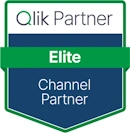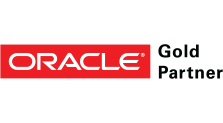Using GIS in 2016
Businesses can harness geographic information systems (GIS) to collate the vast amount of customer data at their finger tips, make sense of it quickly and place it at the forefront of business decisions.
Businesses are battling to meet customer needs and are all too often falling short. Yet, many don’t even realise the goldmine of data that is available at their fingertips. Visualising customer location data through Geographic Information Systems (GIS) allows businesses to see patterns, trends and behaviours that they previously wouldn’t have been aware of.
Using the correct metrics in 2016
Ultimately, every business wants to decrease its costs, whilst improving efficiency and profitability. Setting SLAs and KPIs is the first objective. It’s important to look outside the organisation when doing so as customers are continuously comparing their experience with other service providers.
Measuring performance against the best of breed in the industry will allow businesses to benefit from a much clearer understanding of its customers and which metrics are acceptable.
Then, it’s time to look inwards, and to manage the vast amount of data coming in from various sources, whether that be sentiment analysis via social media or performance metrics via a CRM system or within the supply chain.
Using KPIs and SLAs for factors such as call out response times or customer call centre handling will identify anomalies and exceptions.
Visualising and analysing this information with the use of maps allows an organisation to focus on locations where performance gaps may occur. This enables factors contributing to performance gaps to be identified and forms the basis for implementing preventative measures. When this happens in near real time, it allows businesses to be even more agile, exceeding customer demand.
Asking the right questions
It goes without saying, but to bring about a change, it’s crucial to ask the right question when analysing the data. For example, a company using GIS to track drive time responses might ask, ‘How do I reduce the response time to it takes to reach a customer?’
Rather, it should ask, ‘How can I use the data I have to identify things that go wrong and then focus on reducing call outs?’ Data can only do so much; a business needs to be asking the right questions for it to work as part of an effective business model.
Harnessing customer location data
Businesses such as major shopping centres can use permission-based GPS data – collected from customer’s mobiles – to produce aggregated data which establishes where shoppers are travelling from. In adherence to data protection laws, businesses aren’t privy to customer’s personal information, but the aggregate data can be used to understand to inform decisions regarding target marketing campaigns and to help plan shopping centre tenant mix.
Currently, many shopping centres build a model using the last set of census data. This five year old data is normalised using additions to the UK Postal Address File, Voting Registers and movements in house prices. This data is then used to help centres with their planning.
However, it isn’t as powerful as using near-real time mobile data and analytics to paint the most up to date, accurate picture of their customer base, where they are travelling from and how often. Given the large quantities of data being pooled, it would be easy to lose key insights in spreadsheets and reports.
Instead, by adding these layers of information onto maps through GIS, the data becomes visualised and easy to digest, allowing businesses to spot key findings that would have previously been hidden.
One source of the truth
Businesses have access to so much data but often overlook the important question of how to use it more effectively to improve end to end process efficiencies. The key way to do this is to develop ‘one source of truth’ where the data is all stored in one place, combining in-house performance data and external data feeds whether that is social media, customer complaints, traffic flows, weather feeds or school holidays. The possibilities are endless.
Lighting up the enterprise
By harvesting data from multiple sources and storing it in one place, a business can directly increase the accessibility of the data for key stakeholders, as well as the ability to share the most relevant data quickly and conveniently.
All too often, businesses operate in silos, unknowingly holding valuable data back from departments as it is too difficult to share. Sharing information through GIS allows the data to be set in layers on maps, enabling the business to set who sees what according to job role or territory.
By aggregating all data points in one place, integrating the data efficiently and then sharing it, each department can work more productively across the board, improving cross-functional processes.
It also allows organisations to take a holistic view of all operations, lighting up the enterprise and allowing them to make informed decisions at strategically important times, accurately meeting customer needs and pre-empting future issues to minimise impact.
With this, businesses are discovering a new and innovative way of working that delivers both insight and focus, dramatically improving performance across the board.
GIS in action
Not only is GIS helping to improve aspects of business; it’s increasingly being used to drive business transformation both in the public and private sector.
In the private sector, Jaguar Land Rover use maps to model and analyse a wide variety of customer and environmental datasets to increase the understanding of driving conditions and optimise vehicle design.
Within the public sector, Public Health England is using ArcGIS to better understand public health information to gain a multi-dimensional perspective of complex health issues, ensuring that a range of facts are considered before determining the best course of action.
Additionally, Westminster City Council has utilised GIS to visualise patterns in pupil numbers, allowing it to make better decisions about where to site new schools.
Sourced from Graham Wallace, senior strategist, Esri UK
Looking to connect your maps to data? See below for our range of connectors that connect data from QlikView/Qlik Sense to ESRI.






